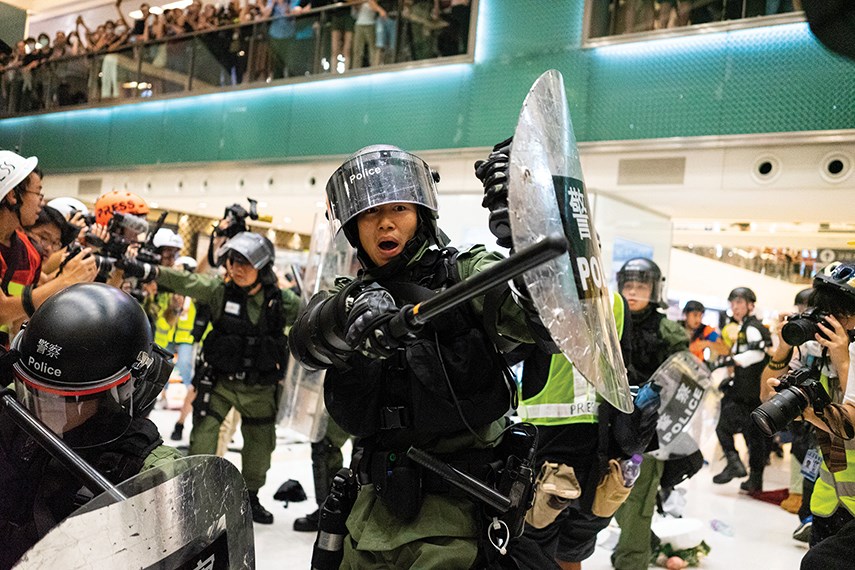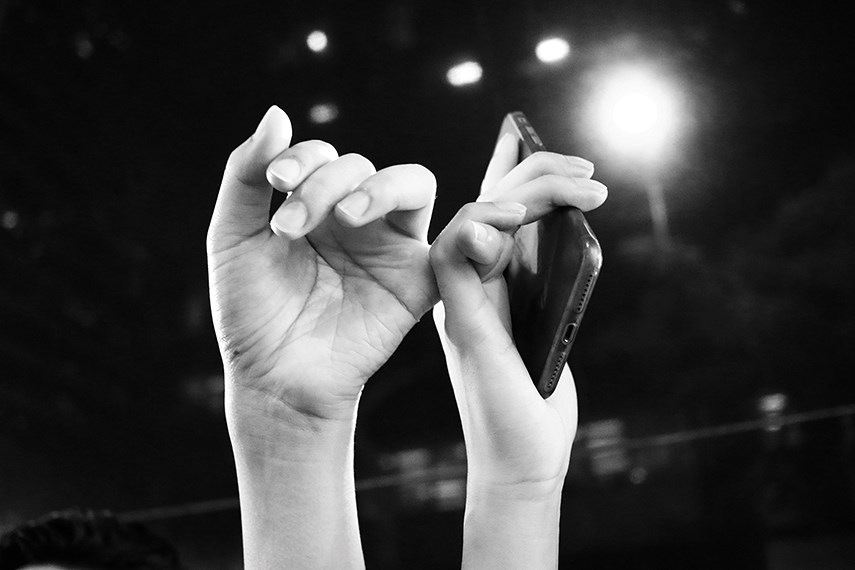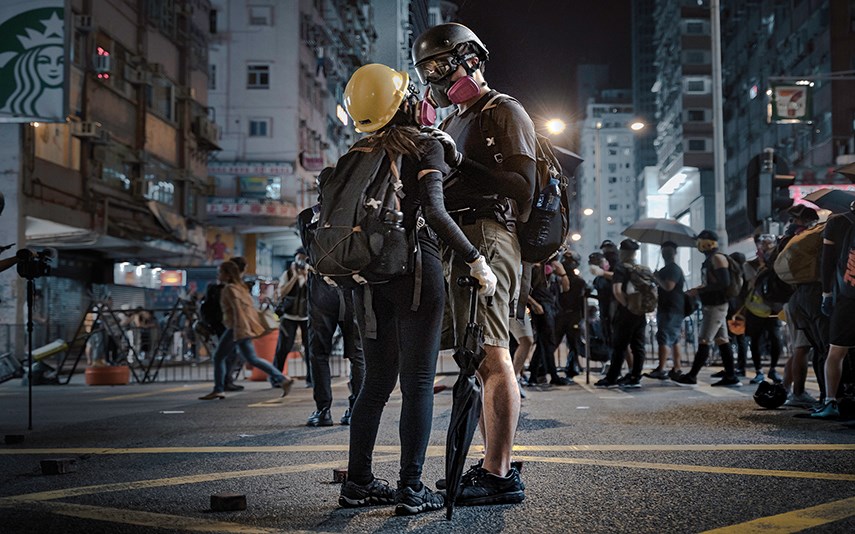The Polygon Gallery in partnership with the North Vancouver City Library’s Issues That Matter program will be hosting the Revolution of Our Times (RooT) exhibition until Jan. 26. Photojournalist Talk: Jan. 22, 7-9 p.m. For more information visit eventbrite.ca/e/revolution-of-our-times-exhibition-tours-tickets-89068637693.
The revolution appeared and, just as quickly, it appeared to vanish.
In the fall of 2014 the streets of Hong Kong were crammed with umbrella-wielding protesters demanding the right to vote for the region’s chief executive in open elections.
The calls for universal suffrage continued for nearly three months until protesters, some fearful of increasingly aggressive police and others hopeful of dialogue with the government, left.
“They scrubbed the town clean. There was almost no sign of it,” photographer Aaron Guy Leroux remembers of the Umbrella Movement.
After the energy and emotion that swelled on the city streets, the end of the protest seemed like an anticlimax, Leroux reflects.
Of course it wasn’t an end, only a pause.

The generational divide and wealth gap that fueled the protest movement hadn’t abated. And when protesters returned to the streets to oppose a bill that would have allowed suspected criminals to be extradited to mainland China, Leroux realized the underpinnings of the Umbrella Movement had been “boiling under the surface the entire time.”
The possibility that the conflict might be resolved at the ballot box was also hampered last October when pro-democracy activist Joshua Wong was barred from running for office.
“Where do you go?” Leroux asks. “If the government’s closed off and you can’t change it from the inside, you go to the streets.”
Leroux had been on those streets taking photos of police and protesters in 2014. And while the conflict was similar, the feeling on the street was “much more intense, much more violent,” he says.
Police who resembled “high-ranking mailmen” in 2014 were now outfitted with masks and riot gear, and without a trace of a badge, rank insignia, or a nametag.
The protesters had better gas masks, better umbrellas and were increasingly suspicious, Leroux explains. There were several times he was asked to present his press badge out of concern he was an undercover officer infiltrating the movement.
But while the protesters eventually got more welcoming, police tended to get more physical and aggressive, he says.
While there are exceptions, Leroux allows, the general rule is that “protesters are always saying ‘thank you’ and the police are always saying ‘get the hell away from me.’”
While he notes that he’s an outsider in the city, he says the possibility of peaceful resolution is becoming remote.
“The police force is out there being used as pawns to solve a political problem,” he says. “Every confrontation between protesters and police is producing injuries and animosities that are remembered. ... Each injury becomes its own cause.”
Leroux tried to give himself a schedule, tagging along with police one day and protesters the next. He also alternated between a digital camera and 35-millimetre film. Shooting film is slower, but that can be a nice contrast from feeling “like some crazy shark [as you] shoot-shoot-shoot without thinking about it,” he explains.
“The 35-mm is costing you money every time you click the shutter so you’re a little more intentional about it.”
It was also a chance to get images with a little more depth opposed to the shots of stand-offs in the street.
“It’s so easy to stand in between the police and the protesters and take photos of the police shooting tear gas and the protesters making their barriers with their umbrellas like the Romans with their shields,” he explains. “But there’s so many more photos and there’s so many more stories out there.”

That idea occurred to photographer Adam Malamis as well.
While most photojournalists “tend to be very lone wolf-y,” Malamis pulled everyone together, Leroux says, noting a late-night of beers after a day chronicling the protest. There was something happening beyond the tear gas and the Black Bloc that most people were seeing. But by taking a collection of work from 18 photographers, the chronicle becomes more comprehensive.
“The diversity of everyone’s style . . . it gives a lot more nuance to the story.”
Having just arrived in Vancouver, Leroux is amazed at how quickly the project came together.
“They’re hanging photos in the gallery as we speak,” he marvels.
The photos can also be scanned so gallery patrons can hear the photographers talk about being in Hong Kong and how they captured the moment.
“It’s more than just a headline story on the news.”



